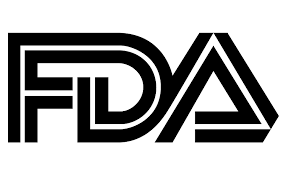BILOXI, Miss., April 11, 2016 — A new USDA analysis of the Food and Drug Administration’s import refusals report reveals that the FDA rejected tens of thousands of imported seafood shipments because they were unfit for human consumption.
From 2005 to 2013, nearly 18,000 shipments were refused entry into the United States for containing unsafe levels of “filth,” veterinary drug residues and Salmonella, which is responsible for thousand hospitalizations per year and hundreds of deaths. “Filth” is a catchall term used to describe anything that shouldn’t be in food—like rat feces, parasites, illegal antibiotics and glass shards.
The USDA summarized their findings by saying, "The safety of imported seafood clearly continues to be of significant concern, based on the number of shipments refused by FDA."
Currently, the majority of all food refusals are seafood products; while the FDA is responsible for ensuring the safety of any food imported from foreign countries, they only have the manpower to inspect less than 1 percent of the 1.2 billion pounds of shrimp entering into the country each year.
The American Shrimp Processors Association (ASPA), a group representing the US Gulf and Southeast Atlantic Coast shrimp fishing industry, has expressed great concern over the findings. Dr. David Veal, the President of ASPA, was quoted as saying, “This issue goes beyond the FDA; I don’t think it’s unreasonable to expect food suppliers to take some responsibility for the health and safety of their products.” While there are a few more FDA inspectors now than a couple years ago, the ratio of shipments to inspectors is still impossibly high. Veal continued, “We hope shrimp exporters will take a more proactive role in assuring that suppliers adhere to laws designed to protect the people who buy their products.”
Shrimp is the most popular seafood in the United States, with the average person consuming more than four pounds of shrimp per year. Worryingly, 90 percent, or 3.6 of those pounds, will be imports from countries like China, Indonesia and Thailand, who routinely distribute shrimp that the FDA ends up refusing.
According to the report, Indonesia and Thailand account for about a fifth of shrimp refusals, and they’re also two of the largest exporters of shrimp to the United States. Moreover, while the report contains information through 2013, in more recent years other countries like India have greatly increased the amount of shrimp they export; in 2015, 297 million pounds of Indian shrimp was turned away.
While information is unavailable on the total number of FDA seafood inspections performed yearly, it is safe to assume that with the extremely low rates of inspection, Americans are consuming imported shrimp that is fundamentally unfit for consumption.
Safety and taste-conscious shrimp buyers are encouraged to purchase wild-caught domestic shrimp, which has demonstrably fewer bacterial and chemical contaminants, and is an important historic industry supporting millions of American jobs. Dr. Veal closed by saying; “Don’t wait until you get sick to start ask questions about where your shrimp is coming from. Things aren’t going to change unless more people realize the gamble they’re taking by eating imported shrimp.”
The American Shrimp Processors Association (ASPA), based in Biloxi, Mississippi, was formed in 1964 to represent and promote the interests of the domestic, U.S. wild-caught, warm water shrimp processing industry along the Gulf and South Atlantic with members from Texas to North Carolina. We are the collective voice of the industry, and our focus is to promote the interests of shrimp processors, other segments of the U.S. domestic wild-caught warm water shrimp industry and the general public.



 Biren Technology Targets Hong Kong IPO to Raise $300 Million Amid China’s AI Chip Push
Biren Technology Targets Hong Kong IPO to Raise $300 Million Amid China’s AI Chip Push  Trump Claims Pardon for Tina Peters Despite No Legal Authority
Trump Claims Pardon for Tina Peters Despite No Legal Authority  HSBC’s $13.6 Billion Take-Private Offer for Hang Seng Bank Gains Board Backing
HSBC’s $13.6 Billion Take-Private Offer for Hang Seng Bank Gains Board Backing  SUPERFORTUNE Launches AI-Powered Mobile App, Expanding Beyond Web3 Into $392 Billion Metaphysics Market
SUPERFORTUNE Launches AI-Powered Mobile App, Expanding Beyond Web3 Into $392 Billion Metaphysics Market  iRobot Files for Chapter 11 Bankruptcy Amid Rising Competition and Tariff Pressures
iRobot Files for Chapter 11 Bankruptcy Amid Rising Competition and Tariff Pressures  Bolivia Orders Pre-Trial Detention of Former President Luis Arce Over Embezzlement Probe
Bolivia Orders Pre-Trial Detention of Former President Luis Arce Over Embezzlement Probe  EU Signals Major Shift on 2035 Combustion Engine Ban Amid Auto Industry Pressure
EU Signals Major Shift on 2035 Combustion Engine Ban Amid Auto Industry Pressure  New Epstein Photos Surface Showing Trump as Lawmakers Near Document Release Deadline
New Epstein Photos Surface Showing Trump as Lawmakers Near Document Release Deadline  International Outcry Grows Over Re-Arrest of Nobel Laureate Narges Mohammadi in Iran
International Outcry Grows Over Re-Arrest of Nobel Laureate Narges Mohammadi in Iran  Bolivia’s Ex-President Luis Arce Detained in Embezzlement Probe
Bolivia’s Ex-President Luis Arce Detained in Embezzlement Probe  Environmental Group Sues to Block Trump Image on U.S. National Park Passes
Environmental Group Sues to Block Trump Image on U.S. National Park Passes  Federal Judge Declines to Immediately Halt Trump’s $300 Million White House Ballroom Project
Federal Judge Declines to Immediately Halt Trump’s $300 Million White House Ballroom Project  Apple App Store Injunction Largely Upheld as Appeals Court Rules on Epic Games Case
Apple App Store Injunction Largely Upheld as Appeals Court Rules on Epic Games Case  Shell M&A Chief Exits After BP Takeover Proposal Rejected
Shell M&A Chief Exits After BP Takeover Proposal Rejected  Ford Takes $19.5 Billion Charge as EV Strategy Shifts Toward Hybrids
Ford Takes $19.5 Billion Charge as EV Strategy Shifts Toward Hybrids  Federal Judge Blocks Trump Administration’s Pause on New Wind-Energy Permits
Federal Judge Blocks Trump Administration’s Pause on New Wind-Energy Permits  Treasury Wine Estates Shares Plunge on Earnings Warning Amid U.S. and China Weakness
Treasury Wine Estates Shares Plunge on Earnings Warning Amid U.S. and China Weakness 































